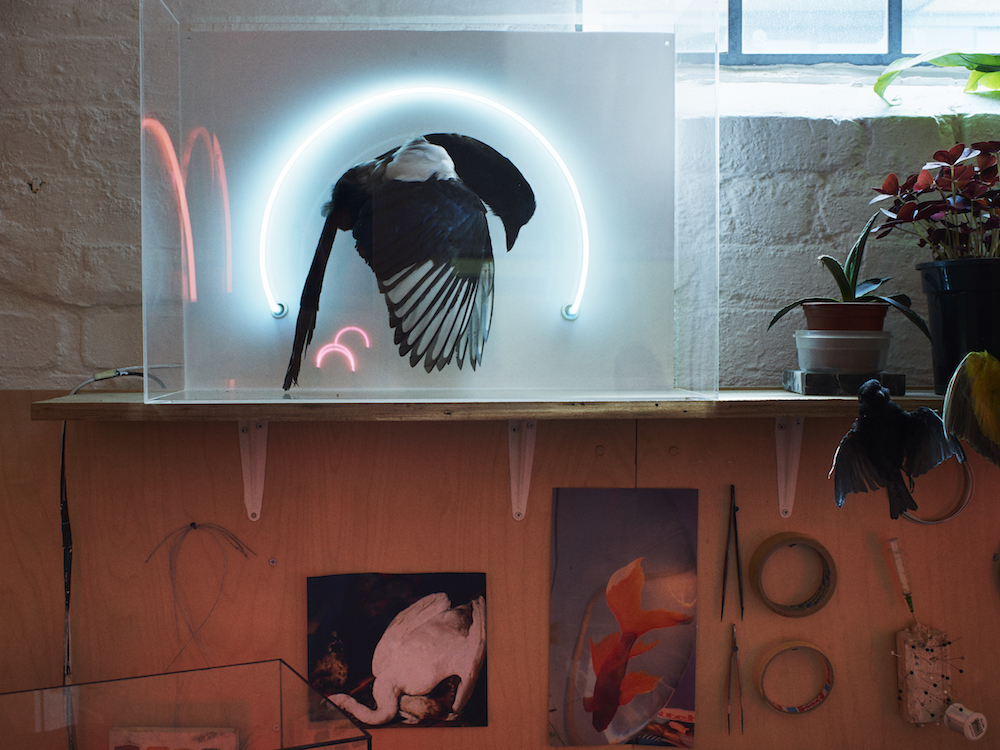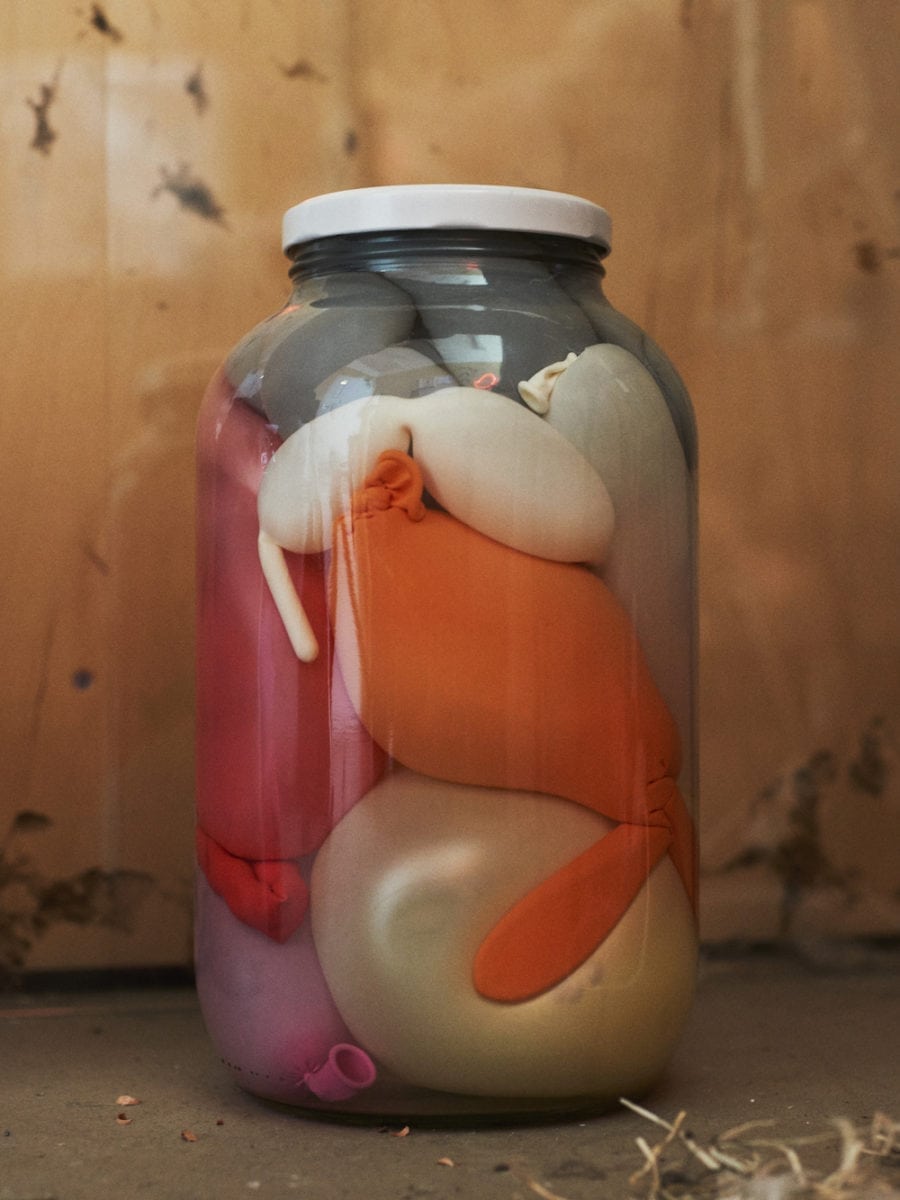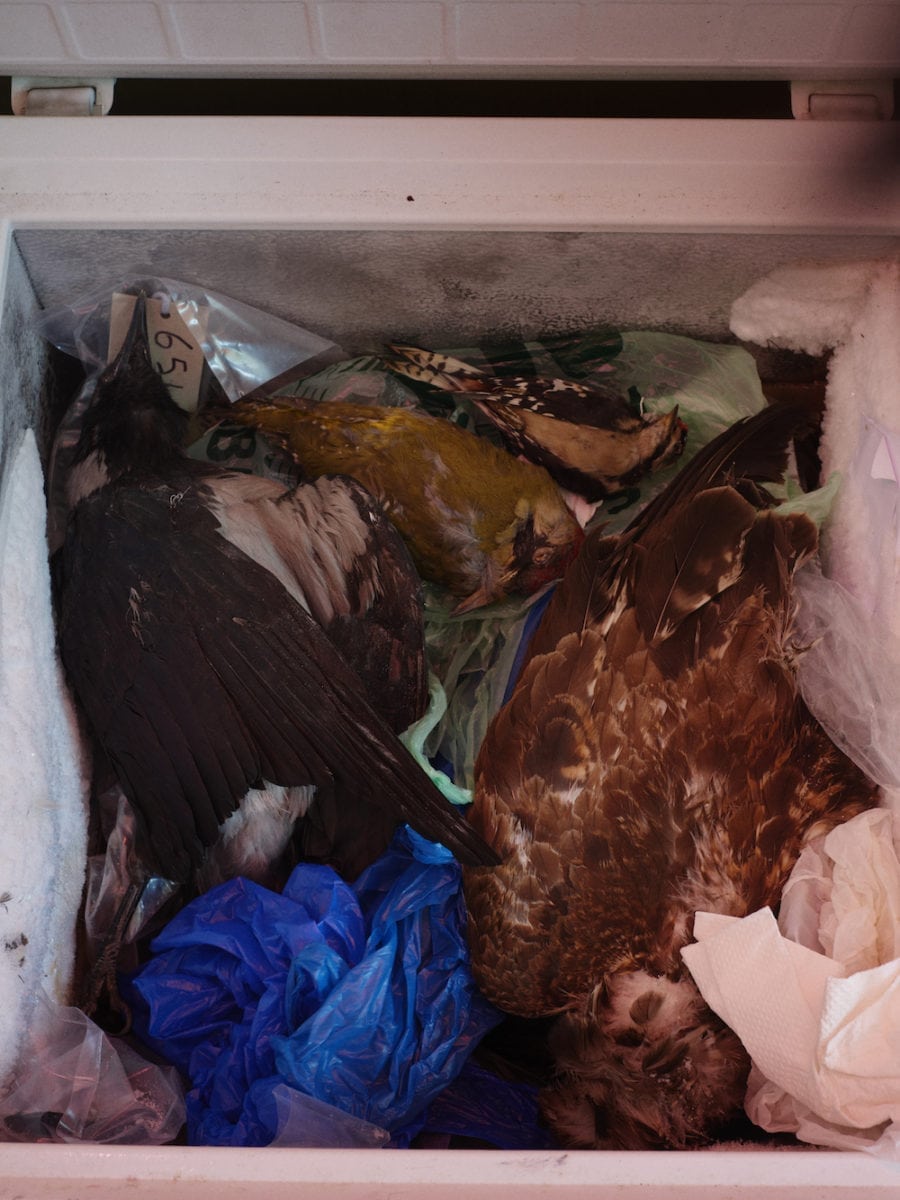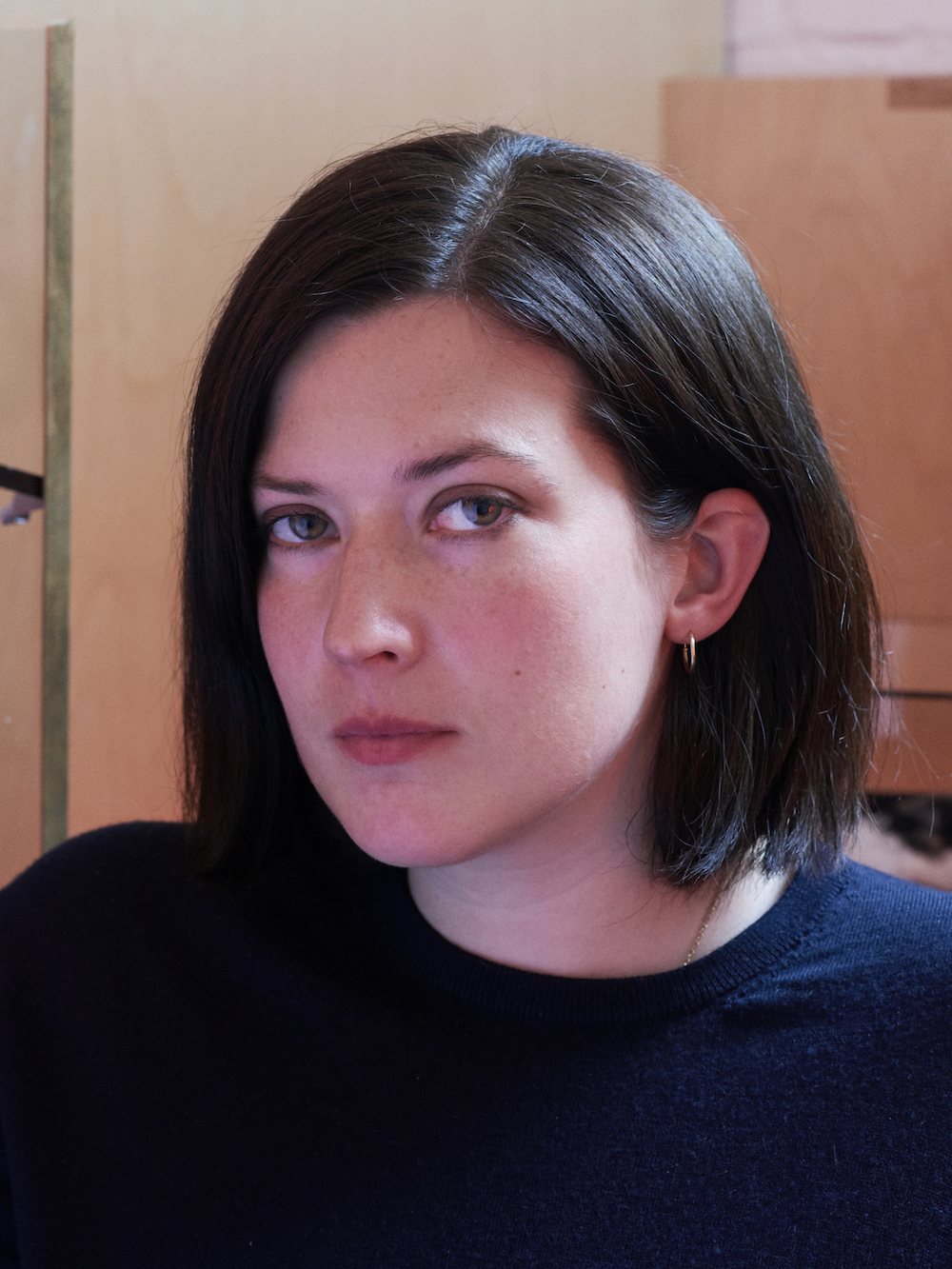
Last month I headed to Sarabande, the creative outpost of the late Lee Alexander McQueen’s foundation, where artists, designers, jewellers and more all work alongside one another. The studios and gallery space are housed within an ex-stables in east London, and the studios’ residents are carefully chosen. Cross-disciplinary work is encouraged, and the selected makers work together on many projects. I met with Harriet Horton, a British artist who works with taxidermied animals and neons, developing a gentle form of the traditional technique which veers away from its darker nature—quite literally bringing light to her sculptural dead beasts.
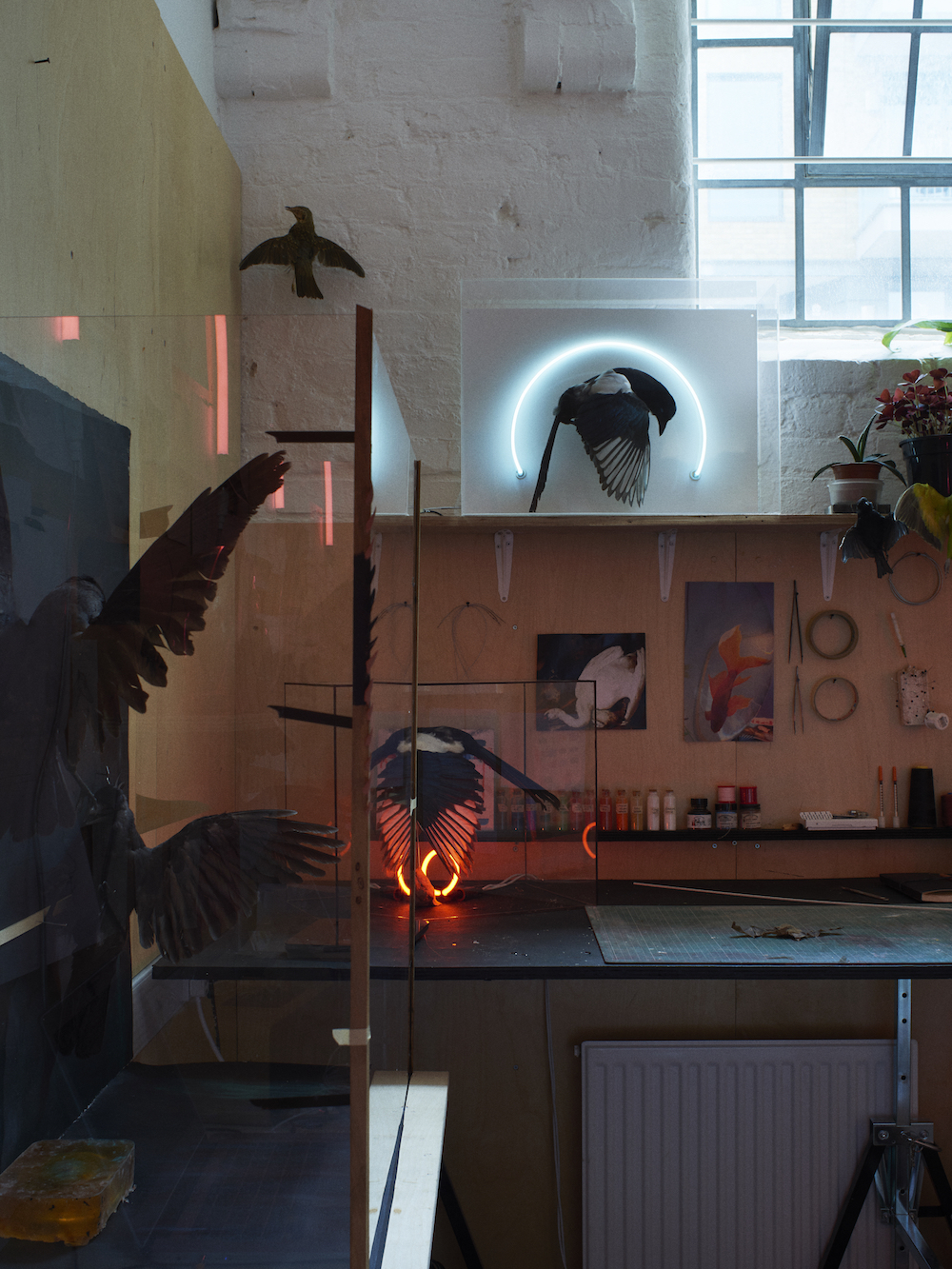
Can you tell me a bit about your artistic background? How did you get into taxidermy to begin with?
I originally wanted to go to art school to do sculpture; my first idols were artists or comedians and I wanted to do it myself, but I didn’t know quite what I wanted to do. I went and did philosophy instead—which was great, and I got to learn a lot about aesthetics anyway. Then I was getting more interested in taxidermy because it was a sculpture in itself. I moved to Brazil and met a taxidermist there. When I came back to London I went to see George Jameson who taught Polly Morgan and the best of them. I knew I didn’t want to do traditional taxidermy, but you have to learn the basics. He has this amazing tower in the middle of the woods, it’s quite a romantic place to learn. I did a four-day intensive course and when I came back I was still keeping it as a hobby and learning other things I wanted to do.
I was always interested in art as escapism. I wanted to remove the macabre association. There were a lot of people doing taxidermy at the time which was quite gothic. I had a massive taxidermy collection and I sold it all because I fell out of love with it. I realized it needed a softer feel to it, which is when I introduced neon, and the whole thing just changed. I’ve been working on that for quite a few years.
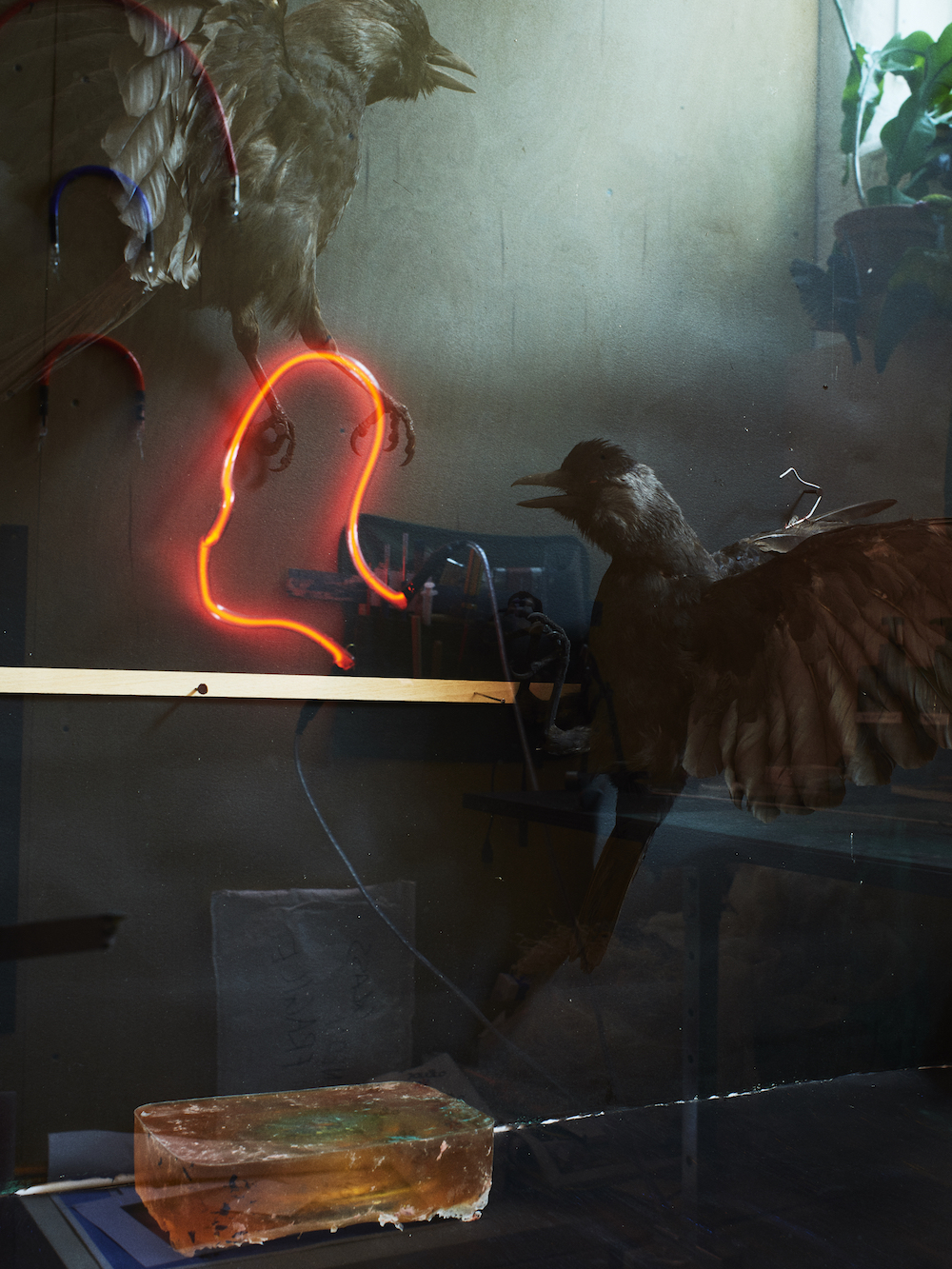
“I was always interested in art as escapism. I wanted to remove the macabre association”
Where do you feel the line is where taxidermy becomes art? Obviously there is so much of a traditional background to it. Do you feel the two worlds are quite opposite?
Not at all. There is a weird question of art and artistry. But I think it’s completely subjective. I see what I do as art, but I have studied in the traditional way to be able to change it.
What did you start on?
I started on a mouse, and the smallest things are always the hardest ones: it’s quite bad! Then I did birds, which are hard because of the wing joints, but the finished product is so much more rewarding than the mammals. But composition-wise you can make them quite soft and gentle. They are slightly unnatural poses, but I just wanted to soften it. I tend to do the more common species and I tend to dye them black too. With certain birds if I keep the actual colour it does look too traditional.

Do you see the animals as a material?
Yes, and I think that’s why most of them are dyed black. They are more of a sculptural silhouette. When you add neon as well, there’s more that you can do with it.
Do you try to get a likeness of the animal as it would have been in life, or do you treat it as something completely removed from its origin?
Referencing is the most important thing, as well as drawing anatomy. You have to learn to draw, and it’s more about the muscle so you know where things fit. The body comes out quite whole and I have to build it back up millimetre by millimetre. George Stubbs had a barn next to an abattoir and he would hang up a horse and draw it, and then take the skin off, and draw it again, and draw it layer by layer. In his painting of the lion attacking the horse, the horse looks amazing, but the lion looks a bit shit! You can see where his speciality is.
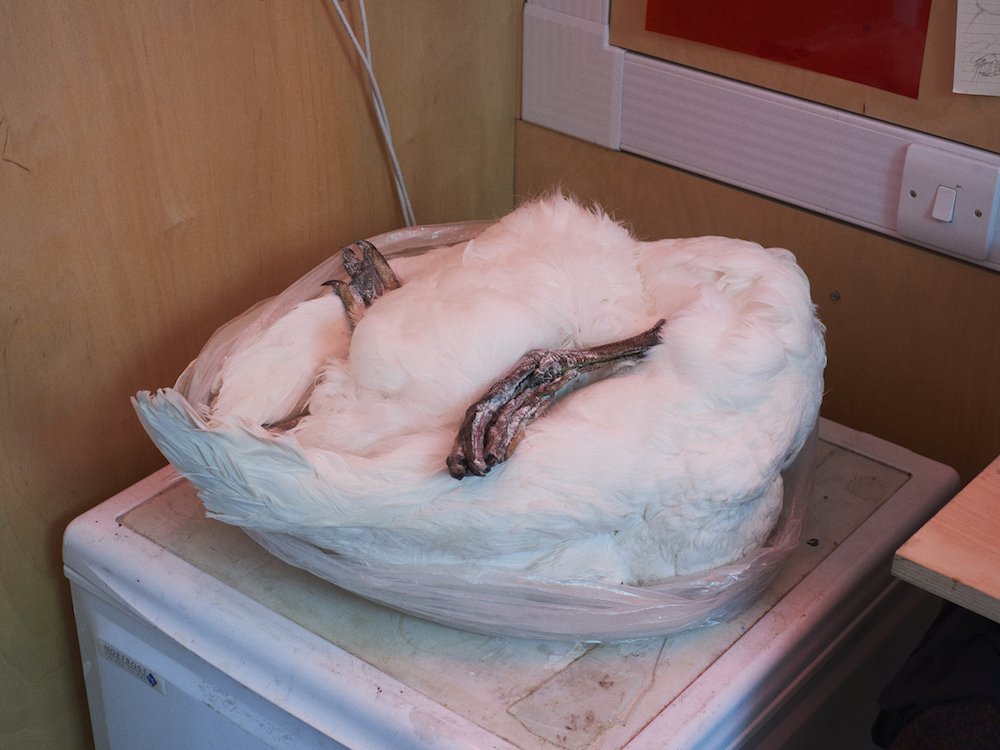
Were you quite inspired by other taxidermists while you were training? Or have your inspirations come from a broader contemporary art field?
I don’t feel like there was an influence from other taxidermists. Really, the only other taxidermists I knew about at that point was Polly Morgan, and her stuff was very different from what I was doing. I wanted mine to be a bit more emotive. For me, it’s always just escapism, something to relax into. I have this process where I start doing something, and I can be working on it for a long time, and I can get a high, a buzz, and it just clicks, and I’ve got what I want from it. I think other people just get it—it’s not too conceptual. But my biggest compliment is when people who don’t like taxidermy like it.
With lots of traditional taxidermy there is a sense of death. You can feel it. It often doesn’t feel there’s life even in the positioning of them.
I don’t believe you can ever get a lifelike dead animal. We can’t create life. It’s always the eyes that are a giveaway, and I don’t ever put eyes in. It’s weird because we have these associations with animals. There are certain animals I feel OK seeing—with the more exotic ones you feel more guilt.
I suppose there can be a sense of ownership or containing an animal. With trophy hunting, for example, there is this pride attached to owning the animal which doesn’t sit well.
And there is no sustainability, it’s just a kill. There is a pride, that’s why they’re on display in the way that they are. I’m very sustainable in everything I do, as much as I can be. Even doing the prawns, my cat eats the meat! I know where they’re from. Birds are found on the road. I’m very lucky now because people send birds to me. Some people really wrap them up quite beautifully with a little note. And then there is more of a story to it and I know where it’s come from. But I grew up in the countryside and you can just do an early morning drive. So many people ask me to do their pets—or them! I wouldn’t do it; you can’t put in pets’ personalities.
“I’m very sustainable in everything I do, as much as I can be. Even doing the prawns, my cat eats the meat!”
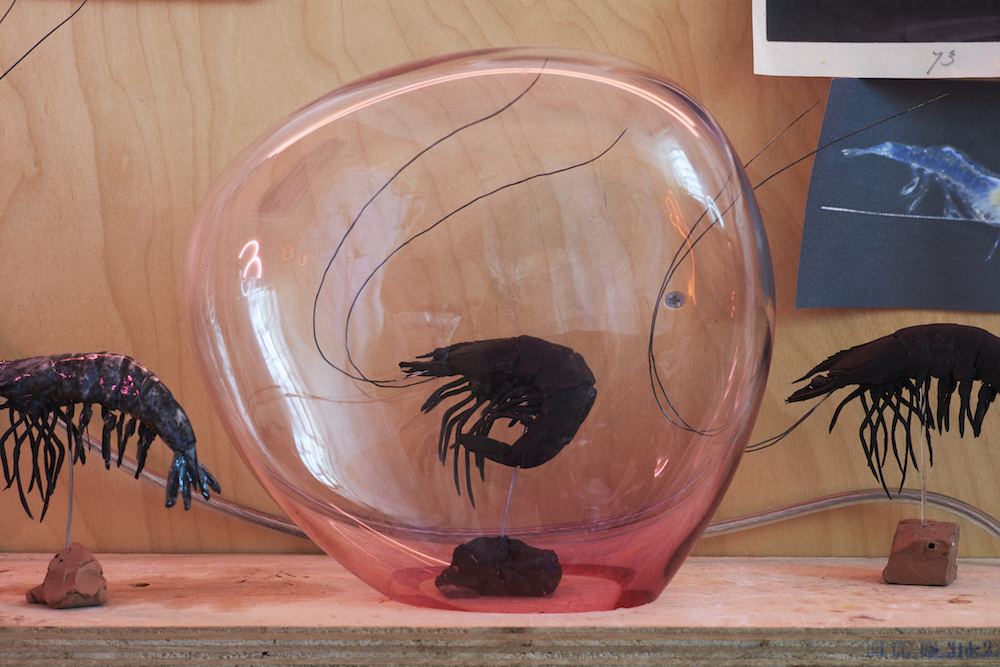
How did you get involved with Sarabande?
Craig Green [the designer] used to be here and I knew Craig and Helen [Price], who work together, and I was looking for a new studio. They encouraged me to apply, the next day I came for an interview and that was it. It was life-changing. They take something you want to do, and elevate it.
Is the cross-discipline environment working for you as well? You’re with people who aren’t just doing art…
So many things. There might be something you’re struggling with, or you need a different tool, and you can pop into someone else’s studio. Being freelance is really lonely, and here there is a sense of community. I really like working late and so does everyone else. If you pop in on a Sunday, there’s someone here. That’s really reassuring. The privilege of having Trino [Verkade] on hand to ask a question, when she was the business side of McQueen—I don’t know where else you’d get that opportunity. The patrons and everyone involved were part of McQueen’s network. They are huge people—to have Nick Knight on board! When I was growing up they were the gods. It’s like no other residency.
